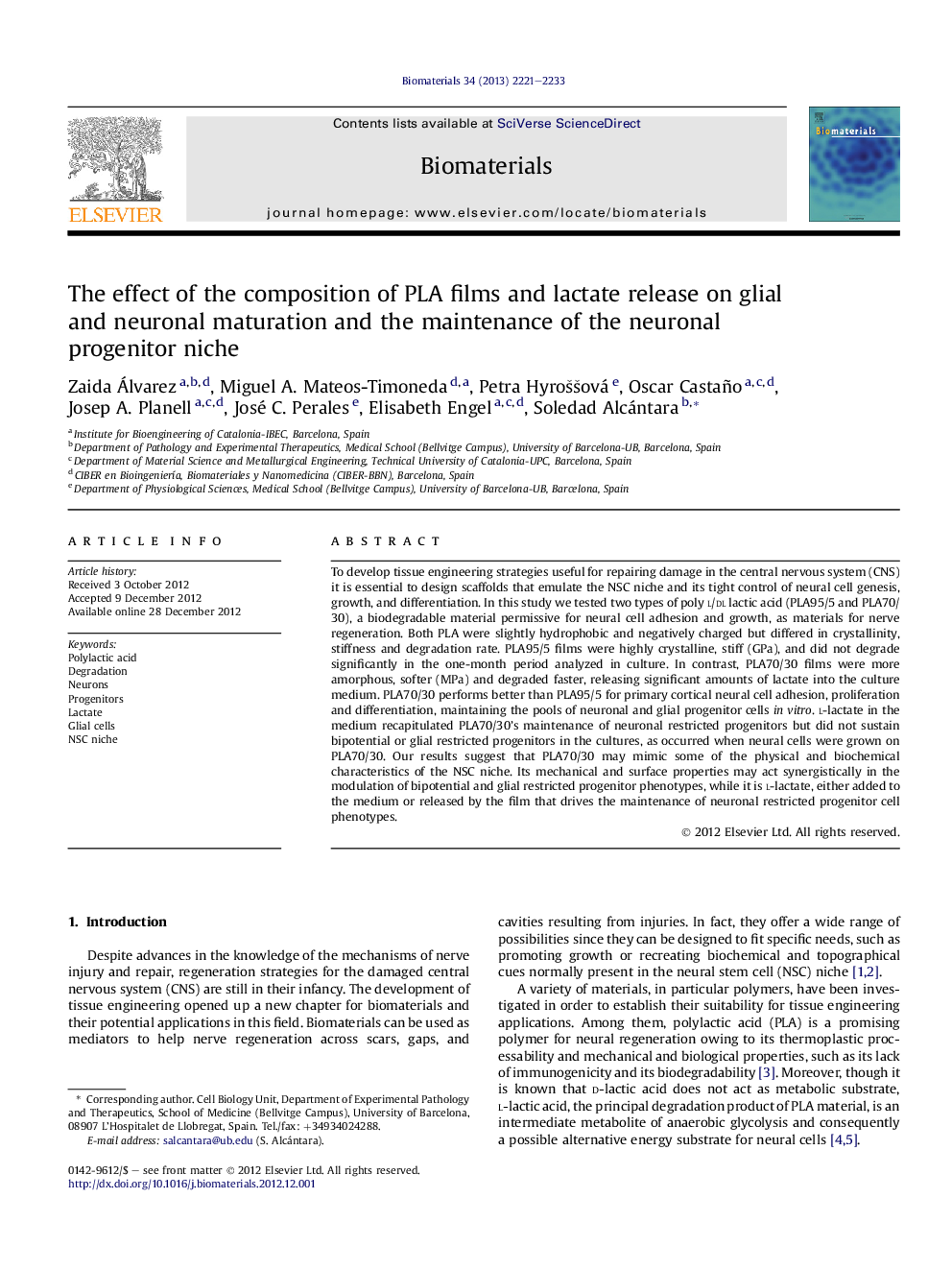| Article ID | Journal | Published Year | Pages | File Type |
|---|---|---|---|---|
| 10228850 | Biomaterials | 2013 | 13 Pages |
Abstract
To develop tissue engineering strategies useful for repairing damage in the central nervous system (CNS) it is essential to design scaffolds that emulate the NSC niche and its tight control of neural cell genesis, growth, and differentiation. In this study we tested two types of poly l/dl lactic acid (PLA95/5 and PLA70/30), a biodegradable material permissive for neural cell adhesion and growth, as materials for nerve regeneration. Both PLA were slightly hydrophobic and negatively charged but differed in crystallinity, stiffness and degradation rate. PLA95/5 films were highly crystalline, stiff (GPa), and did not degrade significantly in the one-month period analyzed in culture. In contrast, PLA70/30 films were more amorphous, softer (MPa) and degraded faster, releasing significant amounts of lactate into the culture medium. PLA70/30 performs better than PLA95/5 for primary cortical neural cell adhesion, proliferation and differentiation, maintaining the pools of neuronal and glial progenitor cells in vitro. l-lactate in the medium recapitulated PLA70/30's maintenance of neuronal restricted progenitors but did not sustain bipotential or glial restricted progenitors in the cultures, as occurred when neural cells were grown on PLA70/30. Our results suggest that PLA70/30 may mimic some of the physical and biochemical characteristics of the NSC niche. Its mechanical and surface properties may act synergistically in the modulation of bipotential and glial restricted progenitor phenotypes, while it is l-lactate, either added to the medium or released by the film that drives the maintenance of neuronal restricted progenitor cell phenotypes.
Related Topics
Physical Sciences and Engineering
Chemical Engineering
Bioengineering
Authors
Zaida Álvarez, Miguel A. Mateos-Timoneda, Petra HyroÅ¡Å¡ová, Oscar Castaño, Josep A. Planell, José C. Perales, Elisabeth Engel, Soledad Alcántara,
